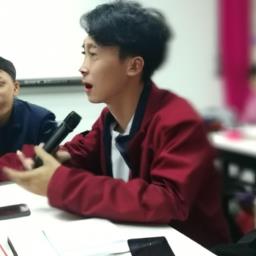Introduction
In recent years, the demand for foreign language proficiency has been on the rise due to globalization and increased international communication. As a result, the field of foreign language studies and teaching has gained significant attention. This paper aims to analyze the current trends in foreign language education and explore the challenges faced by language learners and teachers.
Theoretical Framework

In order to understand the complexities of foreign language learning, it is important to establish a theoretical framework. This paper draws on the theories of second language acquisition, cognitive linguistics, and sociocultural theory to provide a comprehensive analysis. These theoretical perspectives provide insights into how individuals acquire and process foreign languages, as well as the impact of social and cultural factors on language learning.
Trends in Foreign Language Education
With advancements in technology and the accessibility of online resources, the traditional methods of foreign language teaching have been evolving. The use of multimedia tools, such as mobile applications, online language learning platforms, and virtual reality, has become increasingly popular. These tools offer a more interactive and immersive learning experience for learners, enabling them to practice language skills in real-life scenarios.
Additionally, there has been a shift towards communicative language teaching approaches, focusing on developing students' oral and written communication skills. This approach emphasizes authentic language use and meaningful interactions in the classroom, providing learners with opportunities to apply their knowledge in practical contexts.
Challenges in Foreign Language Learning
Despite the advancements in teaching methods, foreign language learning still poses various challenges. One of the primary obstacles is the lack of exposure to the target language outside of the classroom. Learners often struggle to find opportunities for authentic language practice, which hinders their ability to fully develop their language skills.
Another challenge is the influence of the learners' native language on their second language learning. Language transfer, also known as interference, can lead to errors in pronunciation, grammar, and vocabulary. Understanding the specific challenges faced by different language groups can help teachers devise targeted language instruction strategies.
Challenges in Foreign Language Teaching
Foreign language teaching also presents several challenges for instructors. The diverse needs and learning styles of students require teachers to adopt differentiated instructional strategies. Additionally, assessment practices must accurately measure students' language proficiency and provide valuable feedback for improvement.
The integration of technology in language teaching also poses challenges for educators. While technology offers exciting opportunities for language learning, teachers must adapt to new tools and approaches and ensure that technology enhances the learning experience rather than serving as a distraction.
Conclusion
Foreign language education continues to evolve to meet the demands of a globalized world. Advances in technology have revolutionized language learning, providing learners with interactive and immersive experiences. However, challenges such as limited language exposure and language transfer persist, requiring innovative teaching strategies. By addressing these challenges, foreign language education can better equip learners with the necessary skills to communicate effectively in multicultural and multilingual environments.






网友评论